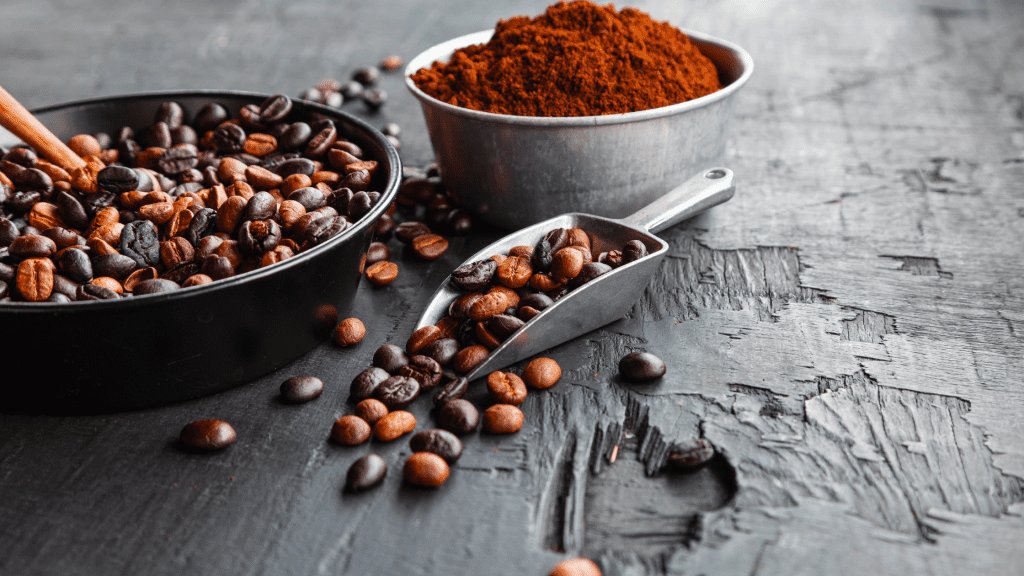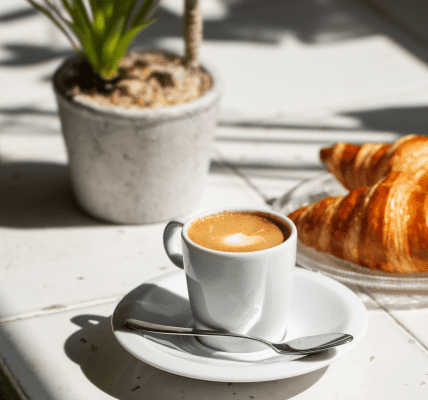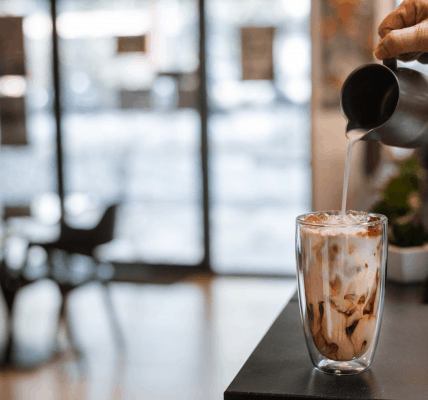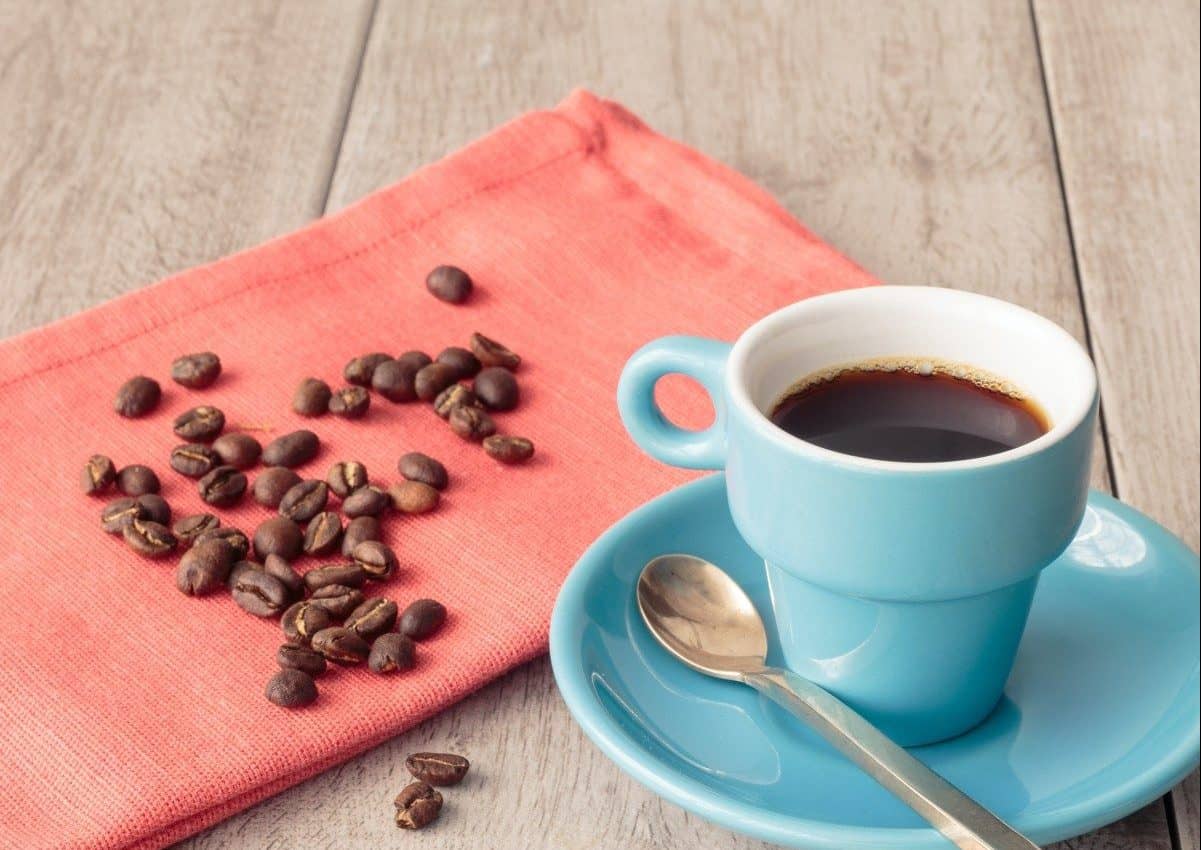
You may enjoy the brewing process and the robustness of a full-bodied cup of java made using coffee grounds. But coffee powder is a must for a quick caffeine fix. So what factors should you consider while choosing the best coffee powder?
A coffee drinker’s palate is essential when choosing the right powder. So, find out about the different bean types, roast, added flavors, etc., used by brands for a delightful drinking experience. Also, check if the powder is lightweight, non-sticky, and dark to get a rich taste.
It’s a good idea to examine the look and feel of the powder, as well as try a sample of the final brew. Let’s find out all about coffee powder today.
Common Questions About Coffee Powder – Answered
Table of Contents
Before you learn about choosing the right coffee powder, you should know more about what it is and how it differs from other coffee varieties. Take a look!
How is Coffee Powder Made?
Coffee powder, or instant coffee, comes from dehydrated coffee extract. The process involves brewing regular coffee – followed by a few additional steps.
First, coffee beans are roasted, grounded, and brewed to produce the extract. Then, water needs to be removed from this extract to create dried coffee.
This dehydrated coffee is soluble in water. There are two methods of dehydrating the liquid – spray-drying and freeze-drying.
Spray-drying is a process of spraying the liquid coffee extract into hot air. On the other hand, freeze-drying requires freezing the liquid before cutting and drying it in a vacuum.
The powder bears the taste of the beans used. Since the powder dissolves in water quickly, it’s a convenient choice for a quick drink in the morning or while camping.
You don’t need a filter coffee machine or French press for this. Just add it to hot water – along with the additives of your choice, like milk, sugar, vanilla extract, etc.
Coffee Powder vs. Coffee Grounds: What is the Difference?
Many people need clarification on coffee grounds and coffee powder. But the two are different. Coffee grounds are made by grinding roasted beans and must be brewed to make pure coffee or coffee extract. This same extract, when dehydrated, produces coffee powder.
Coffee grounds need to be steeped in water for a long time to produce the brew. And it must be filtered away as they don’t dissolve in water. But coffee powder is soluble in water and can make you a quick cup of coffee. You just have to add it to water to make the brew.
Coffee beans offer robust and full-bodied flavors extracted directly from beans. But it fails to produce the subtle flavor notes true coffee lovers enjoy. The process of making powder can reduce flavors and caffeine levels, even if it comes from quality beans.
Coffee Powder vs. Espresso Powder: Are They Different?
The difference between instant coffee powder and instant espresso powder is mainly in flavors because their making process is similar. Both are made by dehydrating coffee extract. But when it comes to espresso powder, only dark roast beans are used for a stronger flavor.
Espresso powder is usually made using Arabica beans. Thus, espresso powder is more concentrated than regular instant coffee. It is also darker and smoother. In comparison, regular instant coffee powder is lighter and more balanced. The caffeine level is also higher.
Instant coffee powder is usually made from Robusta beans or a mix of various beans. It is slightly quicker to make a fresh batch with instant powder. The flavor is weaker, and the finish harsher. Espresso powder is ideal for baking, while instant powder is suited for beverages.
Coffee Powder vs. Coffee Crystals: Are These the Same?
Coffee powder and coffee crystals are both made by removing water from coffee extract. But the first one is made using the high-heat process of spray-drying, which may alter its taste. Coffee crystals are formed due to the freeze-drying process for deeper flavors.
Spray-dried instant coffee is more affordable, and the process is quicker and easier. It produces fine dust-like coffee particles. But due to the exposure to high heat, the natural taste of the extract may be lost to some extent- and you may even get a burnt flavor in it.
On the other hand, coffee crystals are produced when the coffee extract is frozen and dried slowly using a vacuum. This process gives us larger chunks of soluble coffee bits. The original flavors of the extract are preserved to a greeted extent, creating deeper flavors.
Factors to Consider While Choosing the Best Coffee Powder
Many people complain that coffee powder does not yield good coffee. It may fail to mimic the richness of a cup of joe brewed from beans. But you can get pretty close if you choose the right one.
Here’s everything you should consider while choosing the best coffee powder.
a) Type of Coffee Beans Used
While buying coffee powder, find out what type of beans are used in making the extract. Most brands use Robusta beans to make instant coffee powder.
The powder made from this bean variety gives the beverage a slightly bitter taste. However, it is also more pocket-friendly and easier to find.
Some brands also mix Robusta with other beans, like Arabica, to mellow down the flavor harshness. You may also find high-grade coffee powder made solely from Arabica beans with a milder taste.
b) Roast Level
Raw coffee beans must first be roasted before they are brewed into a beverage – or the extract used in coffee beans. Typically, beans have light, medium, and dark roast levels.
The higher the roast level, the less acidic it will taste. Lightly roasted beans have a pale color, are more acidic, and can be enjoyed without adding sugar or milk.
Medium roast delivers a more balanced taste, while dark roast produces a rich color and flavors for a bolder taste and more body. You may also find powder made of medium-dark roast with a beautiful nuttiness.
c) Grind Level
The grind level dictates the texture of the grounds used for making the instant coffee extract. It can be extra-coarse, coarse, medium-coarse, medium, medium-fine, fine, or super-fine.
In coarse varieties, the beans are lightly crushed, and the grounds have a rough texture due to larger chunks of beans. Finely ground varieties are more powdery and smooth.
The extract made from coarser coffee grounds is less bitter, with a smoother taste. On the other hand, if you like your cuppa joe to be strong, go for instant coffee made using finer grounds.
d) Flavored/Pure Coffee
Some coffee powder varieties are derived from coffee extract made by brewing pure coffee beans without add-ons. Clearly, such powders have only pure coffee with a rich taste.
However, if you enjoy flavored or sweetened beverages, there are other options. These are extracted from brews that contain milk, non-dairy creamers, etc.
Some brands produce coffee extract with flavoring agents like chocolate, vanilla, or even spices. Others may contain sugar or other sugar-free sweeteners.
e) Caffeinate Content
The caffeine level in instant coffee is higher than in a regular brew (though you can also find decaffeinated varieties). Let’s compare a cup of each to understand the difference.
One cup of coffee requires a teaspoon of instant coffee and a tablespoon of coffee grounds. The caffeine content in 1 tsp of instant coffee powder is 30-90 mg, while that in 1 tbsp coffee grounds is 70-140 mg.
For an energizing kick, choose powder made primarily from Robusta bean extract and finer grounds. The roast level doesn’t significantly impact the caffeine level, though darker roasts have slightly less caffeine.
f) Color, Aroma, Weight, and Texture
It is important to perform a quality check at the time of choosing your coffee powder. And the powder’s color, aroma, weight, and texture are indicative of its standard.
Pure coffee, with or without add-ons, should have a rich aroma with no strong whiff of acidity or pungency. It should also be lightweight and have a consistently dark color and texture.
If you find that the color is too light or inconsistent, it likely has impurities like corn flour or soybean meal. You should also look out for heavy clumps indicating moisture retention, poor storage, or staleness.
g) Ethical and Health Standards
If you are a conscious coffee drinker, you should buy coffee powder produced virtuously. You’ll need to inspect the ethical and environmental impact of the coffee powder you prefer.
If you’re worried about the exploitation of growers and producers, you should choose fairtrade coffee powder brands. They buy ingredients at a fair price and offer a deserved return.
You can also avoid coffee powder varieties that use chemicals. Organic coffee brands ensure that their products are safe for your health and the planet.
h) Palate and Usage Preference
There’s a wide variety of high-quality coffee powder brands. Ultimately, what you choose depends on how you like your java and how you intend to use it.
Consider your palate, i.e., whether you want strong and acidic coffee, prefer to use add-ons, or like them to keep you awake and alert. Pick your variety accordingly.
Depending on your personal choice, you can choose a powder that can be used for a simple dark cuppa, a tall glass of iced frappe, or some pumpkin spiced latte. You can also find instant coffee to add to your baked goodies,
When to Buy Coffee Powder
You may be a frequent coffee drinker, but it’s best to only buy small quantities of coffee powder at once. It’s ideal to order it on a weekly basis and use the batch up quickly. This is a great frequency to maintain a ready stock available at home for you.
All you need is a bit of planning to ensure the best taste and hassle-free storage of the powder – without running out of it. First, you must figure out how much coffee you drink in a week. If you prefer two cups daily, you should need about 125 g of powder every week.
Accordingly, you can place an order for a fresh batch every week. That way, you don’t have to worry much about proper storage, either. So order only the required amount of coffee powder. The idea is to get a fresh lot of your preferred roast regularly.
How to Store Coffee Powder
If your instant coffee is packed in a resealable packet, you can store the powder in it. But if it comes in a clear bottle made of plastic or glass, store the powder in an airtight, opaque jar. And place the coffee container in a cool and dry place away from light.
It can easily soak moisture and turn into lumps. It can also absorb flavors from its surroundings or other food items – and lose its essence. So make sure that the storage container is properly sealed to ensure that the texture and taste of the powder are intact.
Coffee powder usually has a long shelf life and does not need to be refrigerated or frozen, especially if you’re an avid drinker. However, refrigeration is recommended if you live in a humid region. It is also a good idea to freeze the powder if you won’t use it for a long time.
How to Make Coffee Powder at Home
Did you know that you can make your own coffee powder? Don’t be surprised! If you have a stock of coffee beans, you can make your own instant coffee which you can carry to work, camping, and more!
Here are the steps to make coffee powder at home – without fancy devices!
- Start by finding high-quality coffee beans.
- You can roast the raw beans yourself – in the oven, microwave, popcorn popper, or in a pan on the stovetop. Or, you can use pre-roasted coffee beans.
- Next, grind the roasted whole beans to any texture of your choice. You can also grind the beans electronically or by hand.
- After that, use the grounds to brew coffee in any method you prefer. Here’s an easy way to make filter coffee.
- Then, dehydrate the brew. You can use a dehydrator or the oven at a low heat level to get coffee powder.
You can store this powder and use it to make instant coffee.
Final Words
While choosing the best coffee powder, you should aim for samples of different varieties from multiple brands. That way, you will be able to get a true taste and feel of the drink that the powder will deliver.
With the right instant coffee powder, you’ll get to enjoy a refreshing and flavorful drink – in an instant!



